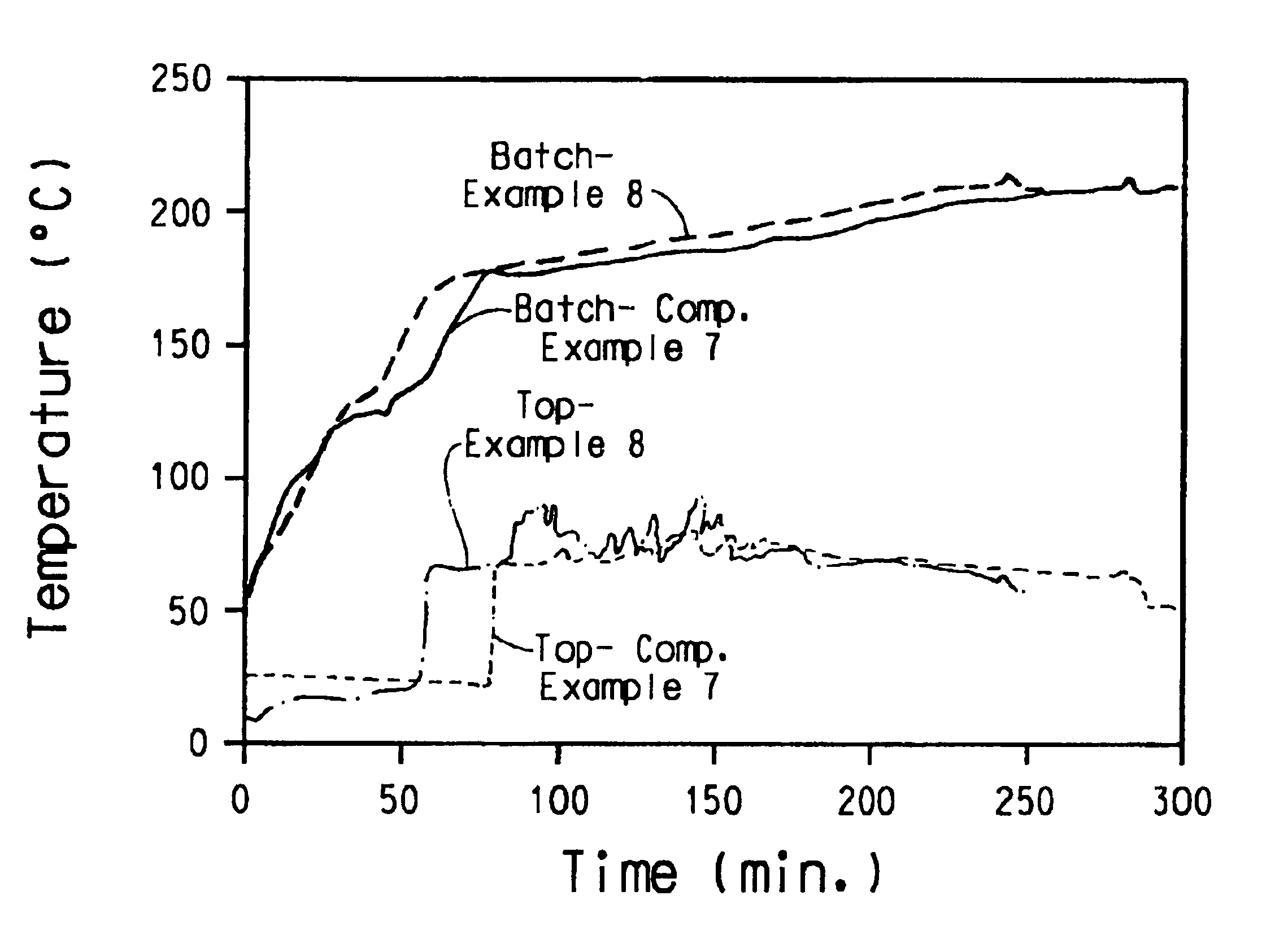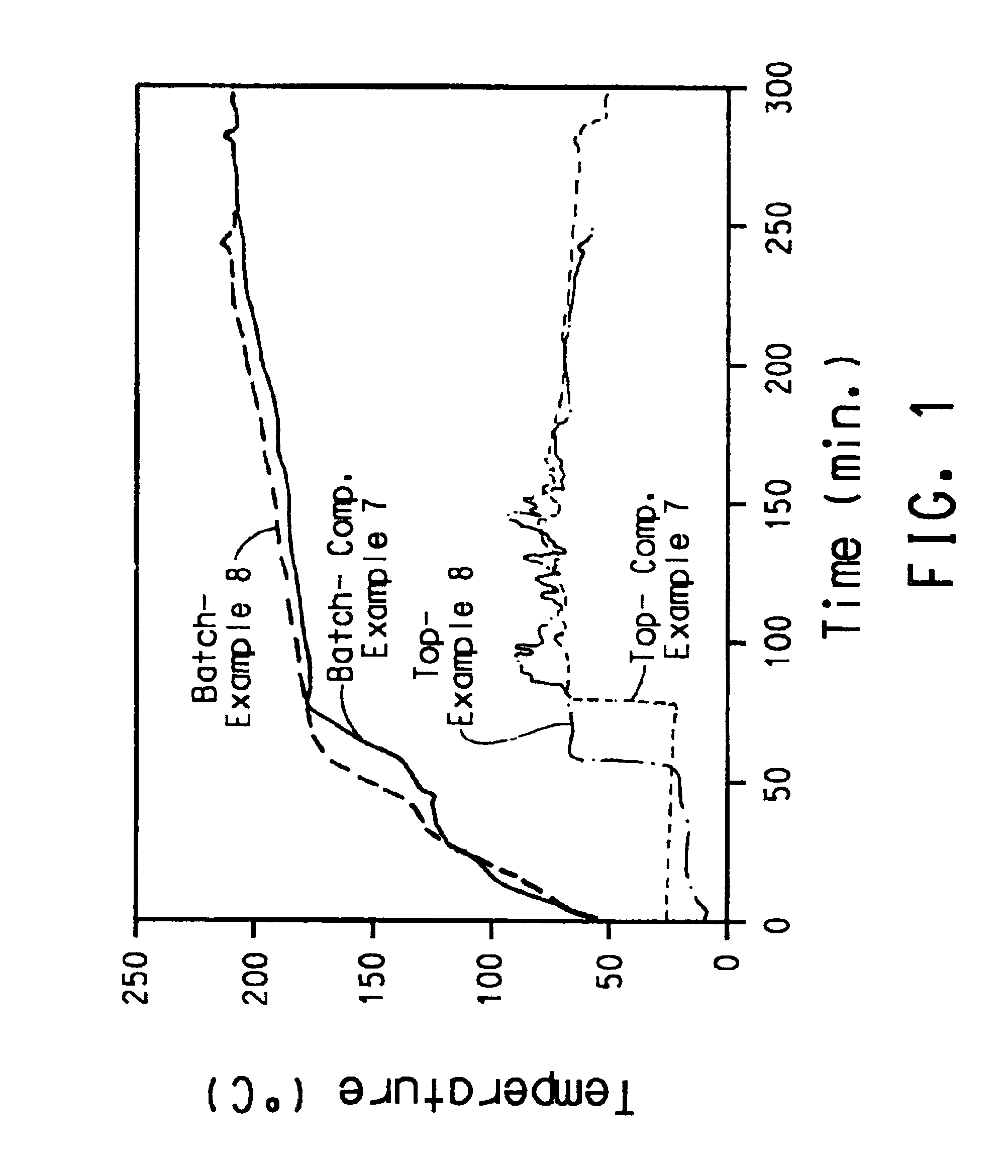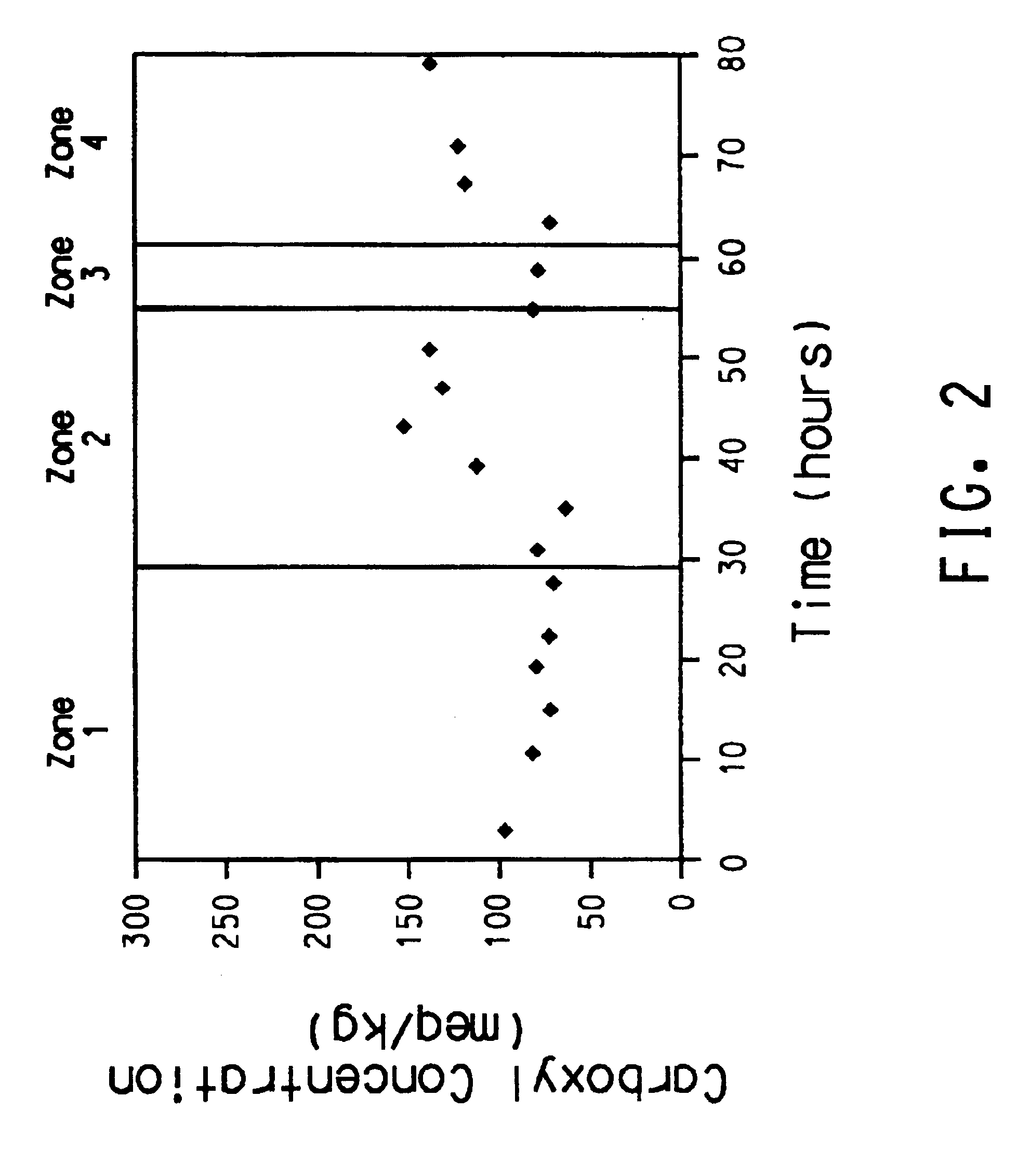Titanium-zirconium catalyst compositions and use thereof
a technology of titanium zirconium and catalyst composition, which is applied in the direction of catalytic reaction, catalyst activation/preparation, chemical/physical processes, etc., can solve the problems of negative influence on color, and achieve the effect of reducing color, low color, and low cos
- Summary
- Abstract
- Description
- Claims
- Application Information
AI Technical Summary
Benefits of technology
Problems solved by technology
Method used
Image
Examples
example 1
The effectiveness of various catalysts for esterification and transesterification was evaluated using reactions comprised of mixtures of methyl benzoate (“MB”, Aldrich), benzoic acid (“BA”, Aldrich), catalyst and 1,3-propanediol (“3G”). The reaction of methyl benzoate with 3G is an ester exchange reaction, similar to the reaction of dimethyl terephthalate (“DMT”) with a glycol (transesterification) or polycondensation reactions to extend chain length. The reaction of benzoic acid with 3G is similar to the reaction of terephthalic acid (“TPA”) or isophthalic acid (“IPA”) with 3G.
Solution A was prepared by adding 0.0201 g of tetraisopropyl titanate catalyst (Tyzor® TPT tetraisopropyl titanate from DuPont) (“TPT”) to 104.68 g of 3G and mixing well to obtain a homogeneous mixture of Ti in 3G. Solution B was prepared by mixing 0.0225 g of zirconium propoxide (Tyzor® NPZ 70% zirconium propoxide in n-propanol from DuPont) (“NPZ”) in 137.20 g of 3G. Solution C was prepared by mixing 0.1259 ...
example 2
A catalyst mixture was prepared as follows. First, 0.2272 g of NPZ was added into a small vial. Then, 0.2574 g of TPT was added and mixed gently, followed by 0.3228 g of 25 weight % tetraethyl ammonium hydroxide in MeOH (“TEAH”, City Chemicals Products, West Haven, Conn.). After gentle mixing, 20 cm3 of 3G were added to produce a homogeneous catalyst solution that did not contain any evidence of solids. Other mixtures of Ti, Zr and TEAH were produced in similar fashion. The catalyst solutions were then tested in the same manner as in Example 1, except that total reaction times were reduced to 45 minutes to compensate for the higher levels of catalyst. Results are shown in Table 2.
In addition, a similar solution was prepared with only TPT in 3G and produced a lumpy solution containing white solids.
TABLE 2Comparison of Activity of Ti, Zr and TEAH Mixtures ForReaction of Methyl Benzoate (“MB”) and Benzoic Acid (“BA”) with 1,3-Propanediol (“3G”)Run No.123456Comp. 7Initial CompositionBA ...
example 3
Catalyst mixtures were prepared in the same manner as in Example 2, but using TBAH, TEAH, or tetramethyl ammonium hydroxide (“TMAH” as 25% TMAH in methanol, City Chemicals Products) as the tetraalkyl ammonium hydroxide (“TAAH”) component. Results in Table 3 show the catalytic effect of the various mixtures.
TABLE 3Activity of Ti, Zr and TetraAlkyl Ammonium Hydroxide (“TAAH”)Mixtures For Reaction of MB and BA with 1,3-Propanediol (“3G”)Run No.123Comp. 4567Initial CompositionTAAHTEAHTMAHTBAH—TEAHTMAHTBAHBA (wt %)2.92.92.92.92.92.82.9MB (wt %)5.05.25.05.14.84.75.03G (wt %)92.192.092.192.092.392.592.1Ti (ppm)59605955605659Zr (ppm)969999—9892100TAAH (umol / g)0.80.80.8—0.80.70.8Zr / Ti (mol / mol)0.850.870.88—0.860.860.89TAAH / (Ti + Zr)0.30.30.3—0.30.30.3(mol / mol)Final Composition (FID area %)Unconverted MB5.96.15.96.65.55.66.0Unconverted BA3.73.73.84.33.83.73.9Product HPB4.04.14.12.54.23.84.1
The product compositions indicate that catalyst mixtures composed of any of the tetraalkyl ammonium hydr...
PUM
| Property | Measurement | Unit |
|---|---|---|
| molar ratio | aaaaa | aaaaa |
| temperature | aaaaa | aaaaa |
| weight % | aaaaa | aaaaa |
Abstract
Description
Claims
Application Information
 Login to View More
Login to View More - R&D
- Intellectual Property
- Life Sciences
- Materials
- Tech Scout
- Unparalleled Data Quality
- Higher Quality Content
- 60% Fewer Hallucinations
Browse by: Latest US Patents, China's latest patents, Technical Efficacy Thesaurus, Application Domain, Technology Topic, Popular Technical Reports.
© 2025 PatSnap. All rights reserved.Legal|Privacy policy|Modern Slavery Act Transparency Statement|Sitemap|About US| Contact US: help@patsnap.com



